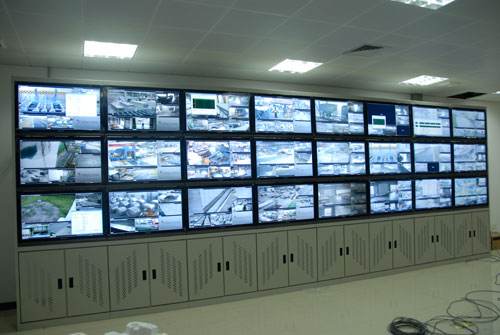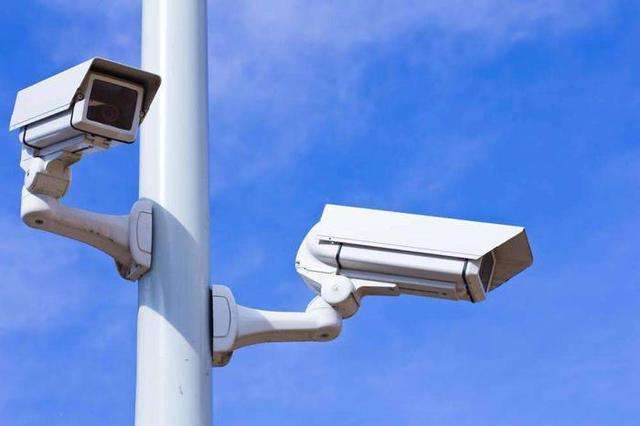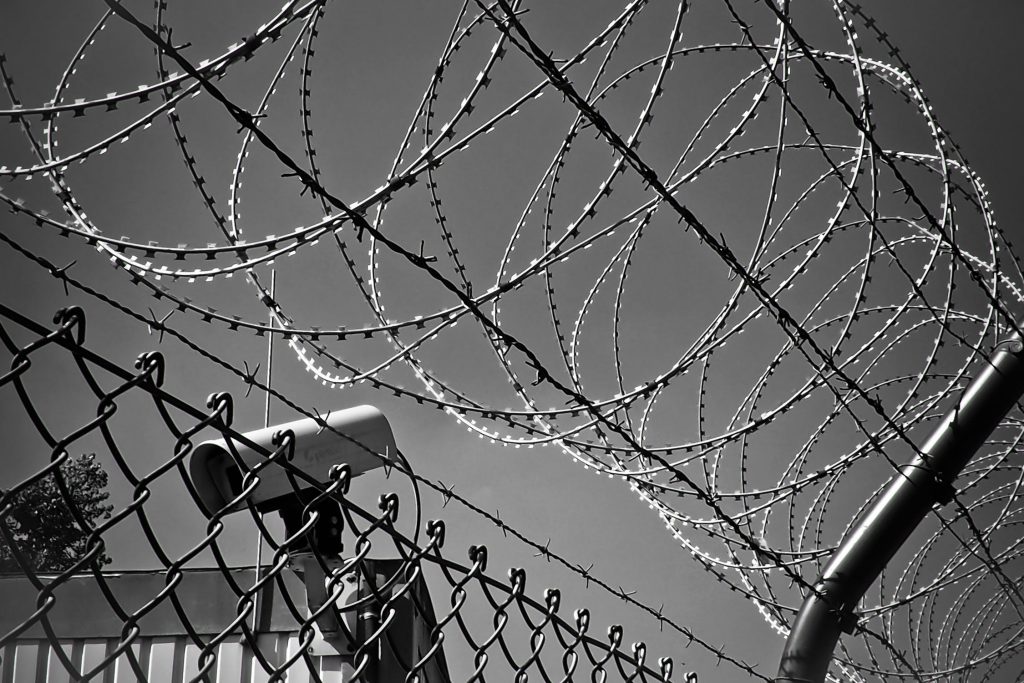
As people want more security of property and personal safety, the Video Surveillance system become more and more popular in the world. If you live in a big city, you can find those cameras everywhere.
So, do you know how those cameras record your face?
Let’s learn four things of Video surveillance system in this article now.
-
What is the Video surveillance system?
The Video surveillance system is composed of 5 parts: camera, transmission, control, display, record registration.

The camera transmits video images to the control host through coaxial video cables, network cables, and optical fibers. The control host then distributes the video signals to various monitors and recording equipment, and simultaneously records the voice signals that need to be transmitted to the video recorder.
By controlling the host, the operator can issue instructions to control the up, down, left, and right movements of the gimbal and adjust the zoom and zoom operations of the lens. The control host can be used to control multiple cameras and gimbals.
Utilizing a special video processing mode, you can perform operations such as recording, playback, and processing of images to achieve the best video results.
-
What devices does the Video surveillance system include?
Those Video surveillance system products include optical transceivers, optical cable terminal boxes, PTZ, PTZ decoders, video matrix, hard disk recorders, surveillance cameras, lenses, and brackets. Video surveillance system components include a surveillance front end, management center, surveillance center, PC client and wireless bridge.

The description of each component is as follows:
(1) Monitoring front end: used to collect monitoring information of monitored points, and can be equipped with alarm equipment.
① Ordinary camera + video server. The ordinary camera can be an analog camera or a digital camera. The original video signal is transmitted to the video server. After being encoded by the video server, it is transmitted to other devices through the network using TCP / IP protocol.
② Webcam. The webcam is an advanced camera device that integrates camera, video encoding, and web services. It has a TCP / IP protocol stack embedded, which can connect directly to the network.
(2) Management Center: responsible for the management, control, alarm processing, video recording, video playback, and user management of all front-end equipment. Each part of the function is performed by a dedicated server.
(3) Monitoring center: It is used to centrally monitor the area under its jurisdiction, including the TV wall and monitoring customer terminal groups. There can be one or more monitoring centers in the system.
(4) PC client: outside the monitoring center, the PC can also be connected to the network for remote monitoring.
(5) Wireless bridge: The wireless bridge is used to access the wireless data network and the Internet. Through the wireless bridge, the monitoring information on the IP network can be transmitted to the wireless terminal, and the control instructions of the wireless terminal can also be transmitted to the video monitoring management system on the IP network. A commonly used wireless network is a CDMA network.
-
What is the history of the Video surveillance system?
The video surveillance system has been developed for more than 20 years. From analog surveillance in the 1980s to fiery digital surveillance to the ascendant network video surveillance, great changes have taken place.
With the gradual unification of IP technology globally today, we need to re-understand the development history of video surveillance systems. From a technical point of view, the development of video surveillance systems is divided into the first generation of analog video surveillance systems (CCTV), the second generation of “PC + Multimedia Card” -based digital video surveillance systems (DVR), and the third generation of completely IP-based video surveillance. System (IPVS).

First Generation – Traditional Analog Closed-Circuit Video Surveillance System (CCTV)
CCTV relies on specialized equipment such as cameras, cables, video recorders and monitors. For example, a camera outputs video signals through a dedicated coaxial cable. The cable connects to dedicated analog video equipment such as video screen dividers, matrixes, switchers, cassette recorders (VCR), and video monitors.
There are some limitations to analog CCTV:
- Limited monitoring capabilities only support local monitoring, which is limited by the analog video cable transmission length and cable amplifier.
- Limited scalability systems are usually limited by the input capacity of the video picture splitter, matrix, and switcher.
- Users with heavy video loads must remove from the recorder or replace it with new video tapes, and the video tapes are easily lost, stolen, or accidentally erased.
- Poor video quality is the main limiting factor. Video quality decreases as the number of copies increases.
Second Generation – Current Analog-Digital Video Surveillance System (DVR)
The Analog-digital video surveillance system is a semi-analog-semi-digital solution with a digital hard disk video recorder DVR as the core. Coaxial cables are still used to output video signals from the camera to the DVR. The DVR simultaneously supports recording and playback, and can support limited IP network access. Due to the variety of DVR products and no standards, this generation of systems is a non-standard closed system.
DVR systems have these limitations:
- Complex cabling the “analog-digital” solution still requires a separate video cable on each camera, resulting in cabling complexity.
- Limited scalability A typical limitation of a DVR is that it can only expand up to 16 cameras at a time.
- Limited manageability You need external servers and management software to control multiple DVRs or monitoring points.
- Limited remote monitoring / control capabilities You cannot access any camera from any client. · You can only access the camera indirectly through the DVR.
- Risk of Disk Failure Compared with RAID redundancy and tape, the “analog-digital” scheme recordings are not protected and are easily lost.
Third Generation – Future All-IP Video Surveillance System (IPVS)
Compared with the previous two solutions, the all-IP video surveillance system has significant differences.
The advantage of this system is that the camera has a built-in web server and directly provides an Ethernet port. These cameras generate JPEG or MPEG4, H.264 data files that can be accessed, monitored, recorded, and printed by any authorized client from anywhere on the network, instead of generating images in the form of continuous analog video signals.
The all-IP video surveillance system has great advantages:
- Simplicity-All cameras are simply connected to the network via cost-effective wired or wireless Ethernet, enabling you to leverage your existing LAN infrastructure. You can use a category 5 network cable or wireless network to transmit camera output images and horizontal, vertical, and zoom (PTZ) control commands (even directly available via Ethernet).
- Powerful central control-An industry standard server and a set of control management application software can run the entire monitoring system.
- Easy to upgrade and full scalability-add more cameras easily. The central server can be easily upgraded to faster processors, larger capacity disk drives, and higher bandwidth in the future.
- Comprehensive remote surveillance-any authorized client can directly access any camera. You can also access surveillance images from a central server.
- Rugged redundant storage-SCSI, RAID, and tape backup storage technologies can be used to permanently protect surveillance images from hard drive failures.
-
Where is the Video surveillance system used?
The video surveillance system can be used at Internal and external environment of banks, securities business places, enterprises and institutions, agencies, commercial places, building access, parking lot, internal and external environment of high-end community homes, libraries, hospitals, parks.
Take video surveillance of traffic as an example:

Recognize the License Plate
If the video scene is an intersection or a community entrance, as long as the license plate area has appeared in the video, the device can automatically recognize the license plate number and prompt the user with text. It can be used for the inspection of illegal vehicles.
For example, a certain license plate vehicle escapes after the accident without knowing where to go. If there is an intelligent video server at each crossing in the city, the system can only set one or several license plate numbers to be checked to the system at one time through the network Among the various smart devices in the system, once the vehicle with this license plate has appeared in the field of vision, it can immediately alert and save many police resources.
Measure the Speed
For example, to confirm the marking of the distance from the highway, the driver is always reminded not to speed, but speeding still occurs frequently. Imagine if an intelligent video server is installed on the highway, we only need to draw two lines in the field of vision. If we know that the actual distance between the two lines is 100 M, input them into the device, and the device can automatically calculate each pass. The speed of the vehicle, and an alarm is issued immediately when speeding.
Retrograde alarm
For example, the one-way street or station, the exit or entrance of the airport, the traffic flow is one-way. Once someone is retrograde, the system will automatically identify and generate an alarm.
Traffic Statistics
Smart devices can recognize pedestrians and vehicles in the past, and can count the number of people or vehicles in the past. Imagine installing such a smart device at a crossroads or at the entrance of a convention center, which can count the passing traffic or pedestrian flow. It can provide more and more timely information for bus dispatch.

Have you understood the main things of the video surveillance systems? Welcome to leave your comments.
If you wan to order some products of video surveillance, please contact us (sales@router-switch.com).
You also can visit our online shop:
Related Topic:
Recommend Video Surveillance of Uniview, The 6th Player in Global Market







